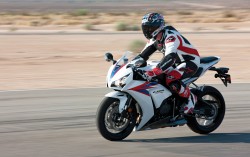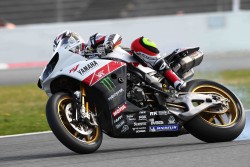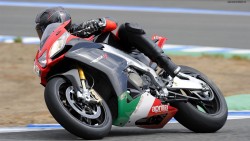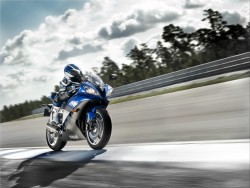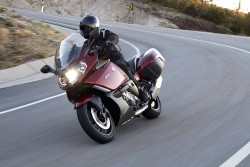The five technologies that are making motorcycling safer for everyone
in News
The human body was probably never designed to travel at triple-digit speeds, balanced precariously as it were on two wheels in the case of motorcycle travel. Motorcycling is an activity that’s inherently fraught with some amount of risk, but ongoing advances in technology are making it safer for bikers to go out and ride.
Sure, technology will never be a substitute for a large dollop of common sense, a high degree of alertness and rider training, but with those elements in place, there are some technologies that are now taking motorcycle safety to a higher level. Here, we take a look at what these technologies are and what they mean for motorcyclists.
Anti-lock Brakes
Various studies conducted in recent years in Europe and the US conclude that with anti-lock brakes (ABS) being fitted to motorcycles can lead to a very significant reduction in fatal motorcycle accidents. Admittedly, the percentage of possible reduction of such crashes varies from one study to the other – various studies peg that number from anywhere between 12% to as much as 48%. But even if we choose to believe only the lower numbers, ABS would still be a very worthwhile addition to all motorcycles.
While ABS has been available on bikes for almost 20 years now, recent advances in technology has made motorcycle ABS systems smaller, smarter and more suited to the way motorcycles – rather than cars – work. Bosch is one of the companies that has been at the forefront of motorcycle ABS development and today, their latest 9th generation motorcycle ABS systems have evolved to the point where their operation can be optimized for different classes of two-wheelers, including scooters, cruisers and all-out sportsbikes.
In addition to preventing wheel lock-up under panic braking, the latest ABS systems can also prevent the rear wheel of a motorcycle from lifting up under very hard braking. And then there are systems that are optimized for working with linked braking systems, where upon the application of the rear brake, the motorcycle’s onboard computer automatically distributes braking force between both wheels in order to maximize braking efficiency and reduce the stopping distance as much as possible. ABS certainly is, and deserves to be, right on top of our list of the technologies that are helping motorcycling become safer for everybody, regardless of the kind of bike you ride.
Traction Control
A lot of people seem to have very strong opinions about whether or not motorcycles should have traction control. From what we understand, traction control definitely has the potential to save motorcyclists from crashing, especially on very high-performance sportsbikes and/or while riding on slippery road surfaces. We won’t get into the debate on whether or not traction control should be allowed in MotoGP and World Superbikes (where the races should, perhaps, be a test of the riders’ abilities rather than motorcycle manufacturers’ expertise with electronics…), but on the street, riders simply deserve to have every last bit of assistance they can get from advanced electronics, including traction control.
Available on some bikes since the early-1990s, traction control systems work by detecting difference front and rear wheel speeds – if the rear wheel is spinning faster than the front, it would mean a loss of grip and the system would reduce or cut power completely until the rear tyre regains traction. With advances in hardware and data acquisition software, traction control systems on motorcycles have become much more sophisticated in the last two years, than they used to be earlier. Rather than simply cutting out power – sometimes abruptly – traction control systems on the latest superbikes reduce power more gradually, staying as unobtrusive and as ‘invisible’ as possible. With multiple settings, traction control systems can be optimized for street or track use, with the latter providing more leeway to the rider and allowing for some wheelspin before stepping in.
The latest motorcycle traction control systems work by analyzing and constantly monitoring various factors, including differences in front and rear wheel speeds, lean angle, throttle position, gear position, engine rpm and suspension movement. Using this data, the system figures out what it needs to do to maximize traction at all times. The more advanced ‘heuristic’ systems can even adapt and ‘learn’ over a period of time, and adjust to changing conditions automatically. In addition to boosting safety, the latest traction control systems have evolved to the point where they actually help a rider go faster, so you have the best of both worlds.
Ride-by-Wire
Motorcycle manufacturers started using ride-by-wire technology on production streetbikes about six years ago. R-b-W tech essentially entails the replacement of some mechanical linkages with electronic ones, for more precise and consistent response. To take one example, R-b-W throttle management would mean that when a rider opens the throttle, there may not necessarily be a direct mechanical link that immediately works the fuel injectors to deliver more fuel to the engine. Instead, an onboard computer would ‘read’ the throttle opening, analyze other factors (engine rpm, gear position, airbox and exhaust pressure etc.) and then ‘instruct’ the fuel injection system to increase fuel delivery by a very precise amount.
Since R-b-W works in conjunction with its other digital counterparts – ABS and traction control – it ensures that engine response is smooth and consistent and that performance (and/or fuel efficiency, depending on how the system has been tuned) is always maximized. With ride-by-wire controls, it then becomes easier for manufacturers to incorporate a wider suite of electronic rider aids, including things like wheelie control, launch control and clutchless quick-shifters.
R-b-W technology is still developing and all mechanical functions haven’t yet been replaced with electronic ones, in some cases because of legal safety requirements (what happens if the computer goes bust?). But with continuous improvements and advances in technology, we can safely expect all key motorcycle functions – throttle management, braking and even suspension adjustment – to go the ride-by-wire way in the near future.
Active Suspension
Manufacturers have been offering easily adjustable suspension on their bikes for quite some time now and some European companies are currently even offering ‘semi-active’ suspension systems on their production streetbikes. Such suspension is electronically adjustable for compression and rebound damping and, in some cases, also offers separate adjustments for high- and low-speed compression damping.
What will take this adjustability to the next level is active suspension that reacts to changing road surfaces in real time, also taking into account factors like load, speed, lean angle, grip (via traction control settings) and ABS operation. Active suspension will not only offer multiple riding modes (normal, sport and touring, for example…) that affect suspension behaviour, but will also be able to ‘learn’ and adapt to changing conditions dynamically and in real time. This, in turn, will improve the motorcycle’s high-speed stability and cornering prowess.
Protective Gear
Along with advances in motorcycle technologies that involve electronic rider aids, motorcycle rider apparel is also going all high-tech. Slinging on an old pair of jeans and a lightweight leather jacket isn’t, perhaps, enough when you’re riding a near-200bhp litre-class superbike. What you need is a full, highly protective riding suit and a top-of-the-line helmet that’ll keep your head cool. And intact, in the event of a get-off.
Leading manufacturers of motorcycle rider apparel now adhere to prevailing standards for elements (‘armour’) that are incorporated into their riding suits and which are supposed to offer added protection to areas like the shoulder, elbow, forearm, hip, knee, upper and middle shin, and the front part of the leg below the knee.
In addition to leather, manufacturers now use a wide range of abrasion-resistant materials for constructing riding suits, with high-density polyethylene foam inside. Highly deformable and with a low elastic memory (which means it doesn’t want to spring back into its original shape after absorbing a major impact), this kind of foam is able to absorb high impact forces without passing on the damaging effects to the rider.
The idea with riding suits and things like back and chest protectors is to aim for lightweight construction, with a stiff, abrasion-resistant outer shell (often corrugated, for added structural stiffness) and rubber/synthetic foam insides that are able to absorb impact.
In addition to the above, some companies are now also working on rider airbag systems that inflate in milliseconds in the event of a get-off and provide extra protection to the rider. Tested extensively for many years on the street and in MotoGP, these systems comprise of two elements – a bike-mounted central control unit and the actual airbag system, which is integrated into the riding suit. In the event of a crash in which the rider is thrown off the machine, the airbag deploys almost instantly, protecting the rider’s back/neck from serious injury.
New, top-of-the-line helmets are also keeping up with the rest of the plot, with manufacturers now using wind tunnel testing to design quieter, better ventilated, better balanced and, ultimately, safer helmets for motorcyclists. With better, more advanced materials (like carbonfibre composites) and more precise manufacturing methods, the best helmets these days may be expensive but they really do offer maximum protection to the rider in the event of an accident.
As we said earlier, technology cannot compensate for common sense and rider training. But with those taken care of, advances in technology certain can help boost safety for motorcyclists.
Source : http://www.fasterandfaster.net
The five technologies that are making motorcycling safer for everyone
This entry was posted on at 2:03 AM and is filed under News. You can follow any responses to this entry through the RSS 2.0. You can
